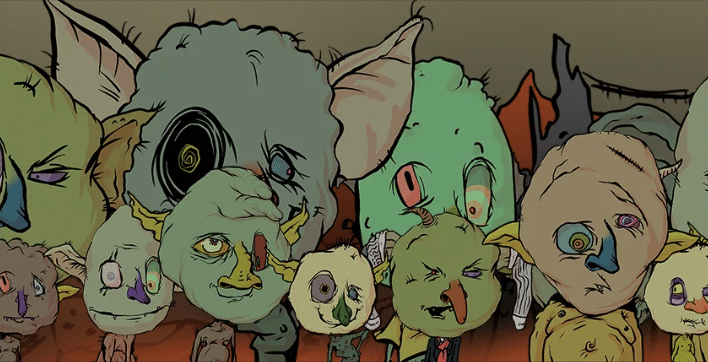Bitcoin emerges as second largest NFT blockchain, challenges Ethereum’s dominance | NFT CULTURE | NFT News | Web3 culture
[gpt3]rewrite
The year 2023 is shaping up to be a defining moment for Bitcoin Ordinals, as the world’s first blockchain solidifies its position in the NFT market. While Ethereum has long held the top position in terms of market capitalization, Bitcoin is now steadily climbing the ranks, vying to become the leading NFT blockchain. In fact, it has already secured the second position, demonstrating a rapid rise in popularity.
Bitcoin’s NFT Sales Surge
Bitcoin has made significant strides in the NFT space, as reported by NFT industry data aggregator CryptoSlam. It has not only secured a place among the top ten NFT blockchains by sales volume, but has also witnessed a remarkable increase in revenue in the past month. During this period, Bitcoin’s NFT sales volume surpassed that of its competitors, including Solana, by an impressive $169 million. Although Ethereum still holds the top spot with around $393 million, Bitcoin’s rise is undeniable.
Bitcoin’s success in the NFT market is not only attributed to uncategorized Ordinals. Various organized fundraising efforts have found success on the blockchain, notably Space Pepes and Bitcoin Frogs. These collections alone generated significant sales volumes of $12 million and $9.6 million respectively in the last 30 days. Big brands and historical projects have also found a home on the Bitcoin blockchain, solidifying their position among the top NFT sales leaders.
Challenging Ethereum’s dominance
While Ethereum’s position as the leading NFT blockchain is formidable, Bitcoin is gradually closing the gap. Ethereum has processed a staggering $390 million in NFT transactions on-chain in the past 30 days, while Bitcoin is approaching half that figure. This remarkable progress is a testament to the explosive popularity of Ordinals, which has transformed Bitcoin into a hub for art, movies, collectibles, tickets and even video games.
Understanding Bitcoin Ordinals and Inscriptions
Bitcoin’s Ordinals protocol, developed by Casey Rodamor, assigns serial numbers to individual satoshis, the smallest unit of bitcoin. These serial numbers, similar to special serial numbers on dollar bills, have led to huge transaction fees for miners. Ordinals have become so influential that NFT traders have co-opted the term, referring to NFTs written on a satoshi as “ordinals” or “inscriptions.” In addition, Bitcoin’s BRC-20 standard enables the creation of tokens linked to Ordinals, opening opportunities for DeFi, tokenization and experimentation directly on Bitcoin.
Will the Bitcoin boom continue?
While Bitcoin’s rise in the NFT market is impressive, surpassing Ethereum will require significant trading activity. Ethereum’s 38 million NFT transactions since inception dwarf Bitcoin’s 320,000. However, with the growing popularity of Ordinals, the number of Bitcoin NFTs continues to increase month after month. The concept of a “flipping”, where Bitcoin overtakes Ethereum as the leading NFT blockchain, may not be as far-fetched as it seems.
Bitcoin is emerging as a powerful competitor in the NFT market, challenging Ethereum’s dominance. With its Ordinals gaining traction and a diverse array of collections achieving success on the blockchain, Bitcoin has become the second largest NFT blockchain. While Ethereum remains the frontrunner, the rapid rise of Bitcoin in NFT sales volume and its innovative use of Ordinals and Inscriptions highlight its potential to reshape the NFT landscape. The future holds exciting opportunities for Bitcoin as it continues to make waves in the NFT space.
[gpt3]


